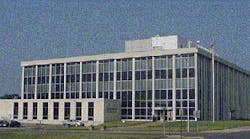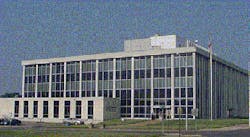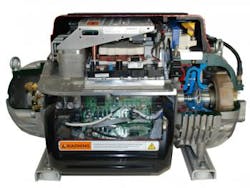The U.S. General Services Administration’s (GSA) Green Proving Ground (GPG) program recently evaluated the effect of new, high efficiency chiller technology on rising energy consumption and costs associated with space cooling in office buildings. It did so by assessing the performance of a variable speed, oil-free centrifugal chiller with magnetic bearings.
In a test case, GSA replaced one of the two existing 150-ton rotary screw chillers at the George Howard, Jr. Federal Building and U.S. Courthouse in Pine Bluff, AK, with a 150-ton chiller that uses two magnetic levitation compressors with Danfoss Turbocor technology. The Pacific Northwest National Laboratory (PNNL) monitored the performance of both the new chiller and the remaining original chiller over a six-month period to determine their cooling load profiles and project a weather-normalized assessment of the potential energy savings offered by the technology.
The study showed the new chiller, with the variable speed, oil-free centrifugal compressor with magnetic bearings consumed significantly less electricity, resulting in energy savings of 42%, compared to the original chiller with a rotary-screw compressor, due in large part to the regularity with which chillers operate at partial load. The variable speed drive allows the chiller to perform at higher efficiency at lower and partial cooling loads, compared with standard chillers with less flexibility in operational speed and power. The chiller achieved a 12.8-year simple payback under an Energy Savings Performance Contract, or 4.7 years after normalizing for payment structure and average per-unit utility costs.
The study showed the new chiller, with the variable speed, oil-free centrifugal compressor with magnetic bearings consumed significantly less electricity, resulting in energy savings of 42%.
Because large chillers with capacities between 500 and 1,000 tons account for a greater percentage of chiller energy within GSA’s portfolio, the study suggests the need for additional testing to evaluate the effectiveness of magnetic levitation technology on a larger scale. In the meantime, GSA has recommended targeted deployment of magnetic levitation technology in its buildings as an end-of-life replacement for chillers with positive displacement compressors.
“For more than 20 years and with heavy investment in research and development, Danfoss Turbocor has been engineering and advancing the variable speed, oil-free, magnetic bearing compressors that today are helping to improve chiller efficiency and make possible significant reductions in energy use, ” explained Ricardo Schneider, president and chief executive officer, Danfoss Turbocor. “GSA’s report recognizes the opportunity for improvement in the ever-increasing energy use of commercial buildings, and we’re confident that the part-load performance and potential for lower maintenance costs of Danfoss Turbocor compressors will only continue to make them an attractive option for equipment OEMs and building owners nationwide.”
To read the full GSA report, visit this link. To learn more about Danfoss Turbocor compressors, visit turbocor.com.









